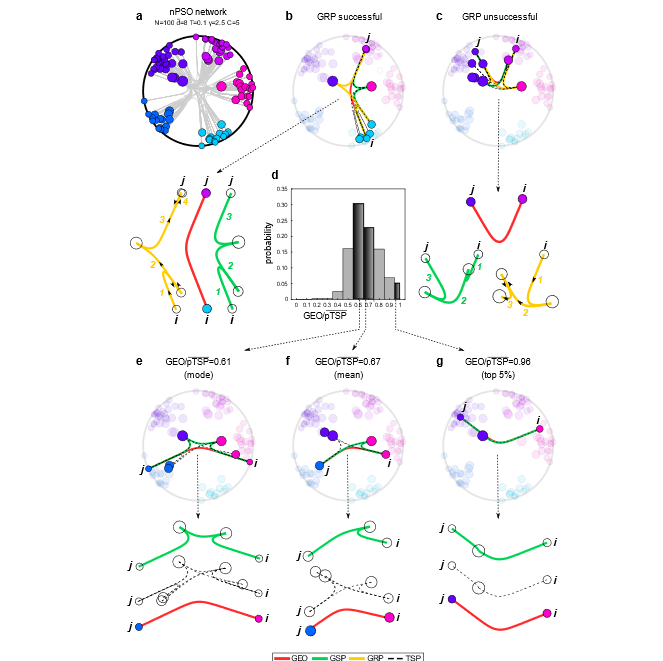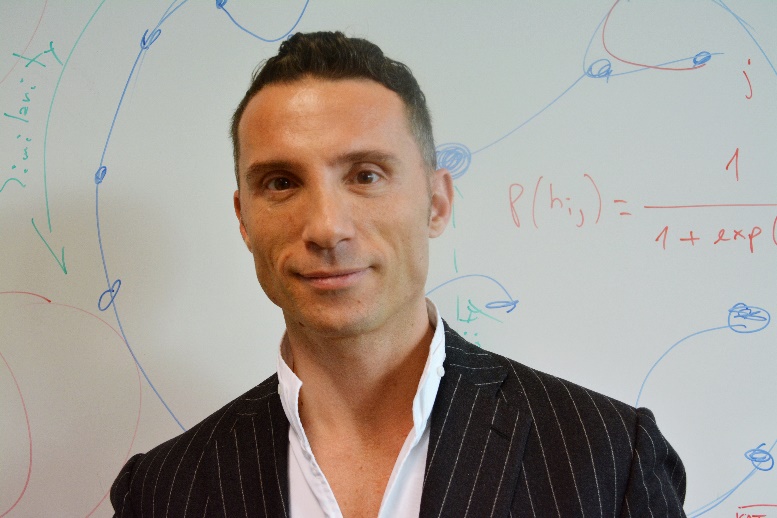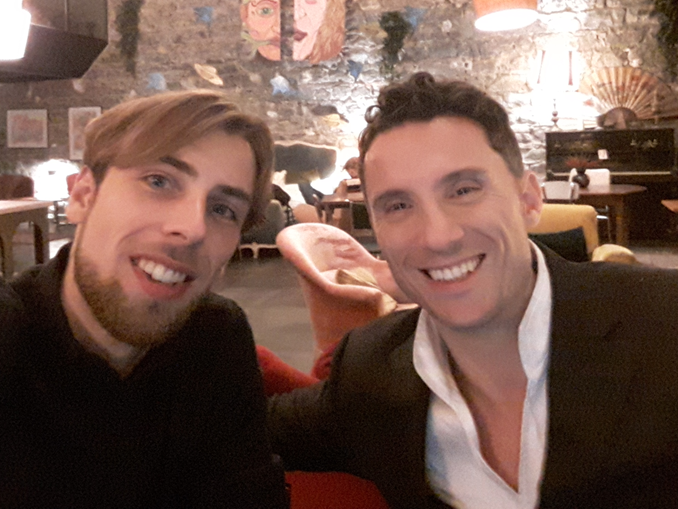A study published on Nature Communications and directed by Professor Carlo Vittorio Cannistraci, Director of the Center for Complex Network Intelligence (CCNI) at the Tsinghua Laboratory of Brain and Intelligence, proposes a fast algorithm to measure the relation between the variables space of an interconnected complex system, its geometry and its navigability, revealing why this can enhance our understanding of the brain differences across age and sex.
Many variables shape the connectivity of networks associated to complex systems such as the human society. Some of these variables are known, for instance the higher the popularity of a person the larger the number of connections can have in social media networks. Another example is given by variables such as semantic or spatial proximity. The more people share common interests or live in geographically proximal area, the higher the probability that they link and cluster together forming small and medium community in a network. If variables such as popularity and proximity are known, many other variables that shape the connectivity of the network in a complex system are unknown, however the geometrical relation of these variables in a multidimensional space, which we call manifold, remains imprinted as a ‘trace’ in the network structure.

Representation of the topological and geometrical paths in a complex network and their congruence with the underlying geometry

Prof. Carlo Vittorio Cannistraci, Director of CCNI at THBI, Tsinghua University

Dr. Alessandro Muscoloni (on the left) and Prof. Carlo Vittorio Cannistraci (on the right).
Two years ago, Prof. Carlo Vittorio Cannistraci moved as chair professor at the Tsinghua University in China, where now he directs the Centre for Complex Network Intelligence, before he led the Biomedical Cybernetics lab at TU Dresden’s Biotechnology Center (BIOTEC), where he started this study together with Dr. Alessandro Muscoloni (at that time a post-doc in Cannitraci’s team). Prof. Carlo Vittorio Cannistraci, who is the first author of the study, use to say that: “If physics studies the principles and mechanisms of the outside universe, brain science studies the principles and mechanisms of the inside universe. My research is at the interface between these two disciplines. I deal with Physics and Engineering of Complexity and Intelligence: studying principles of natural and artificial intelligence”. In the study that has now been published in the scientific journal Nature Communications he envisioned, and realized together with the colleague and co-author Alessandro Muscoloni, how to build an optimized algorithm that reduces 26 years worst scenario of computation to 1 week, being able to measure the extent to which a network topology is congruent with an associated manifold geometry. The manifold represents the rule of geometrical associations between all the variables that contribute to form the network’s shape in a complex system, and the network is a sort of discretization of this manifold. The hidden geometry of the manifold behind the structure of brain networks is unknown. “Although we visualize brain networks in a three-dimensional space, the number of variables that shape their architecture is higher. Some of these variables such as age and sex are known, but many others are unknown, nevertheless we can still find their trace in the shape of the brain network, therefore we can try to measure how congruent is the shape of a network with its hidden geometry. This measure can be used as a marker that can differentiate different states or conditions of brain networks, and therefore can help to envision new theories and measures to design markers for brain diseases”, says Prof. Cannistraci together with his colleague Dr. Alessandro Muscoloni.
Publication
“Geometrical congruence, greedy navigability and myopic transfer in complex networks and brain connectomes ”
Authors: Carlo Vittorio Cannistraci and Alessandro Muscoloni.
Nature Communications 2022
Originally published 27 November 2022
https://www.nature.com/articles/s41467-022-34634-6
Biographic and Institution Information
Carlo Vittorio Cannistraci is a theoretical engineer and computational innovator. He is a Professor in the Tsinghua Laboratory of Brain and Intelligence (THBI) and an adjunct professor in the Department of Computer Science and in the Department of Biomedical Engineering at Tsinghua University. He directs the Center for Complex Network Intelligence (CCNI) in THBI, which seeks to create pioneering algorithms at the interface between information science, physics of complex systems, complex networks and machine intelligence, with a focus in brain/life-inspired computing for big data analysis. These computational methods are often applied to precision biomedicine, neuroscience, social and economic science. https://brain.tsinghua.edu.cn/en/info/1010/1003.htm.Before to move to Tsinghua University he was director of the Biomedical Cybernetics lab at TU Dresden’s Biotechnology Center (BIOTEC).
The Tsinghua Laboratory of Brain and Intelligence (THBI) is an interdisciplinary research institute established in 2017. The institute aims to answer fundamental questions about brain-mind and intelligence through cutting edge, interdisciplinary research effort. To do so, THBI brings together domestic and foreign experts from the fields of brain science, computational neuroscience, engineering, artificial intelligence, and cognitive science. https://brain.tsinghua.edu.cn/en/index.htm
The Biotechnology Center (BIOTEC) was founded in 2000 as a central scientific unit of the TU Dresden with the goal of combining modern approaches in molecular and cell biology with the traditionally strong engineering in Dresden. Since 2016, the BIOTEC is part of the central scientific unit “Center for Molecular and Cellular Bioengineering” (CMCB) of the TU Dresden. The BIOTEC is fostering developments in research and teaching within the Molecular Bioengineering research field and combines approaches in cell biology, biophysics and bioinformatics. It plays a central role within the research priority area Health Sciences, Biomedicine and Bioengineering of the TU Dresden.
Press Contact
Dr. Ric. Ing. Prof. Carlo Vittorio Cannistraci
Phone: +86 135 22 95 1320
E-Mail: kalokagathos.agon@gmail.com

